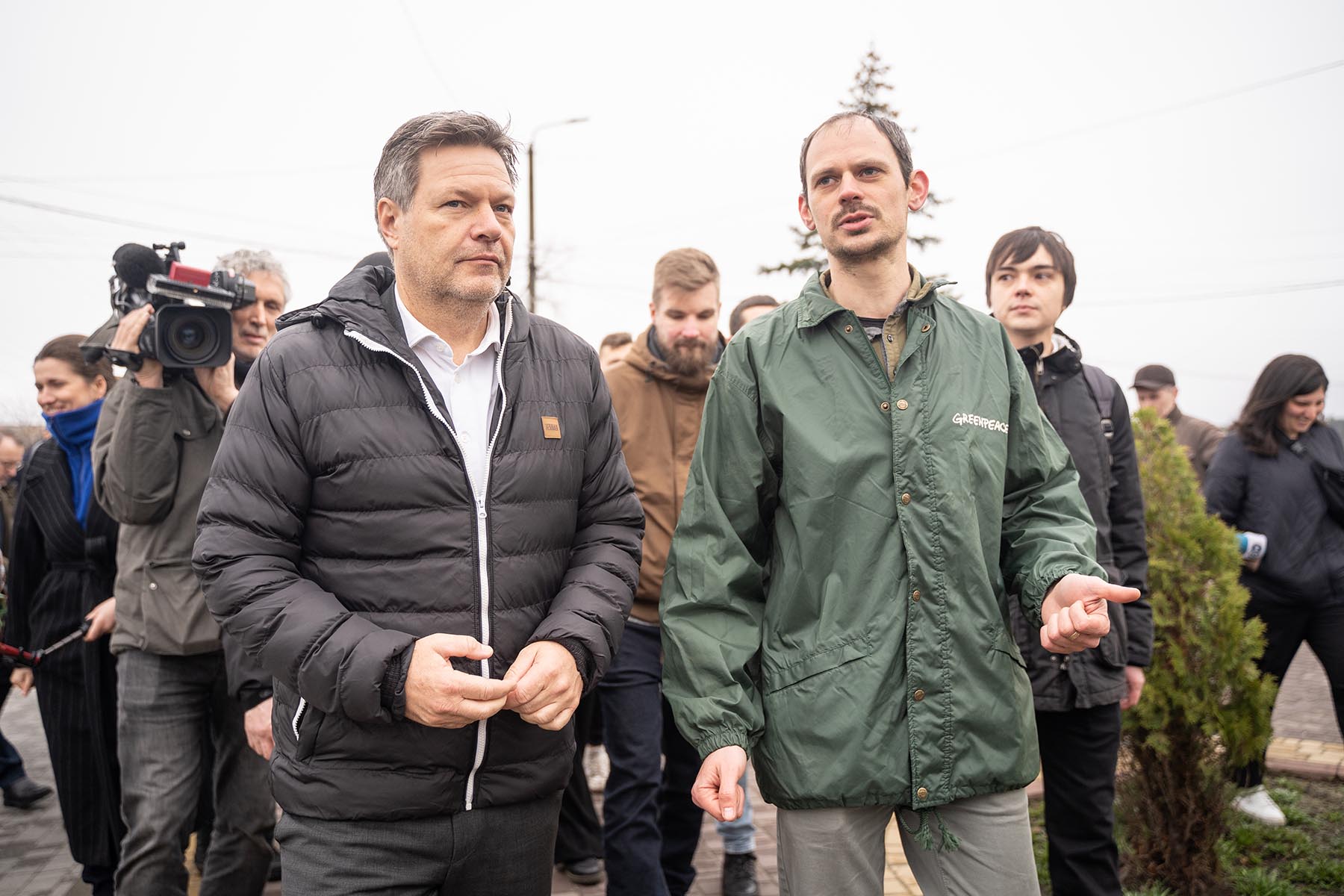The medical facility in Kyiv region, which, at the initiative of Greenpeace Austria and in cooperation with partners, was the first in Ukraine to be rebuilt entirely with green technologies, continues to delight doctors and patients. The solar power plant provides uninterrupted power even during power outages, and the heat pump heats the outpatient clinic with the energy from the ground, even on the coldest days of winter.
Three years ago, in the first month of the full-scale Russian invasion, the outpatient clinic was destroyed by a blast wave when a Russian shell hit its yard.
Today, after a green renovation, the healthcare facility modernized by Greenpeace Austria in 2023 in partnership with NGOs Ecodia, Ecoclub, and the Victory of Ukraine Charitable Foundation is a model of efficiency and cost-effectiveness of renewable energy sources for Ukraine’s social infrastructure.
“Over the two years of green technologies in Horenka’s outpatient clinic, we have become so accustomed to this comfort that we can’t imagine how we used to do without it,” says Olena Yuzvak, director of the Hostomel Primary Healthcare Center, ‘Six months of the year we live exclusively on solar electricity, and the heat pump allows us to heat the premises at any time and make our patients’ visits more comfortable and convenient. In addition, we save a lot of money, which, in times of war, is a particularly important resource for our country.”
The outpatient clinic has a 12 kW hybrid solar power plant on its roof, which is backed up by batteries. The facility is heated by a 20 kW heat pump that accumulates the heat from the ground.
Solar power plant performance data for 2024
Last year, the solar power plant generated 3775 kWh of electricity, which accounted for 55.2% of the total consumption. At the same time, the outpatient clinic’s electricity bill amounted to UAH 27,576 instead of UAH 61,551 – solar energy saved the medical facility more than half of the cost of electricity.
In addition to the savings, the solar power plant stably supported the work of the staff during power outages, which were particularly intense in the summer of 2024. In 2024, the medical facility experienced 89 such outages, with a total of 256 hours of blackouts.
Most of the solar energy was produced between March and October 2024, with 3090 kWh generated during this period. In July, August, and September, the outpatient clinic received electricity exclusively from the sun. July was particularly productive – the sun provided 451 kWh of energy. At the same time, in December 2024 and January 2025, solar energy was supplied the least in a year.
“These are excellent results, considering the small capacity of the solar power plant,” said Polina Kolodiazhna, a campaigner and co-leader of the Green Recovery Ukraine project “The station’s capabilities will be even more attractive when the outpatient clinic is connected to the Net-billing system. This is a mechanism that allows to transfer excess solar energy to the general grid and receive compensation. Unfortunately, the issue of connecting utilities to this system has not yet been fully resolved. Therefore, the station meets only the needs of the institution, although it could save the clinic even more money.”
Heat pump operation data for 2024
During the renovation of the outpatient clinic in Horenka, the heating system was changed from gas to an environmentally friendly and sustainable geothermal system. In 2024, this system continued to show good results. In particular, 7862 kWh of electricity was consumed from the grid to ensure the operation of the heat pumps. At the same time, the pump generated 27,438 kWh of heat. In total, one kWH of electricity consumed was converted into 3.49 kW of heat energy.
If the outpatient clinic had continued to be heated with gas boilers, it would have had an average consumption of 995 m3 per month. At a gas price of 18.342, the payment for the consumed natural gas would have amounted to 109,501 UAH.
So, thanks to the heat pump, the cost savings for the year amounted to 35.34%.
The example of the Horenka outpatient clinic demonstrates that relying on green technologies to rebuild critical infrastructure is a bet on savings, energy independence, and sustainability.
Thanks to solar energy, the staff of the medical facility does not have to follow the schedules of power outages if they occur during Russian attacks on Ukraine’s energy sector. Doctors can rest assured that vaccines for patients are completely safe in the refrigerators and their computers are running smoothly. At the same time, heat pumps heat the outpatient clinic regardless of the official start or end of the heating season.
The Greenpeace Ukraine team is convinced that in times of war, green technologies are a reliable and strategically beneficial solution for rebuilding hospitals, schools, and kindergartens. It is the critical infrastructure that can start our country’s gradual transition to green energy sources.
Ukrainian communities that have chosen the path of green recovery are already becoming leaders in this process.

